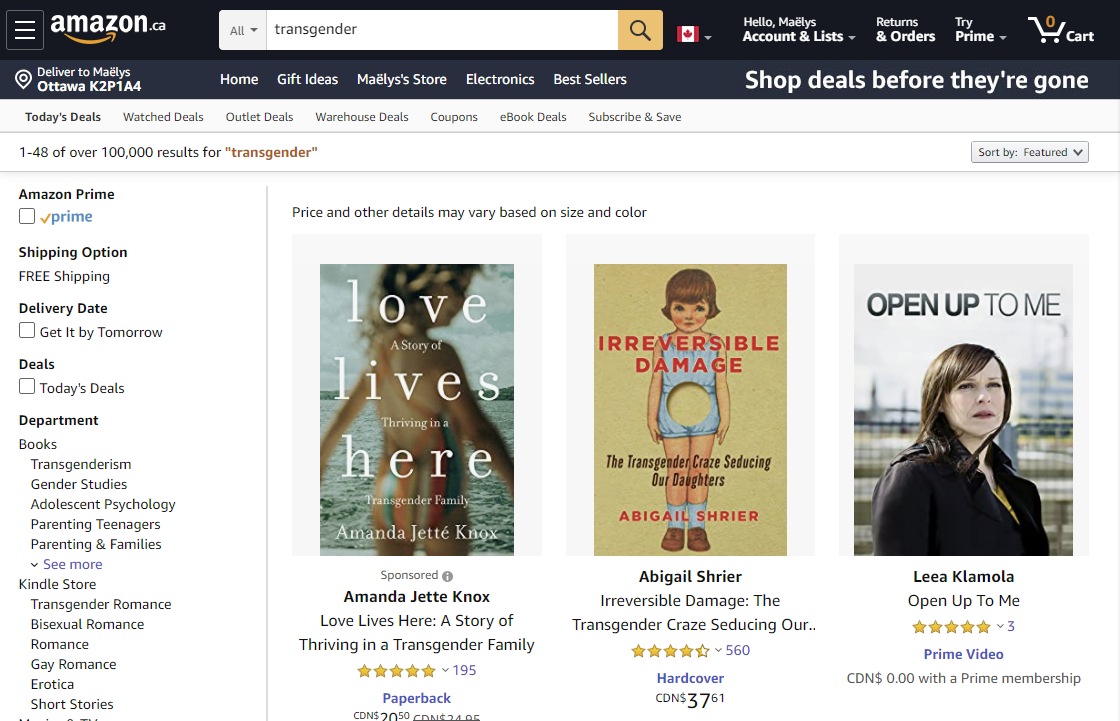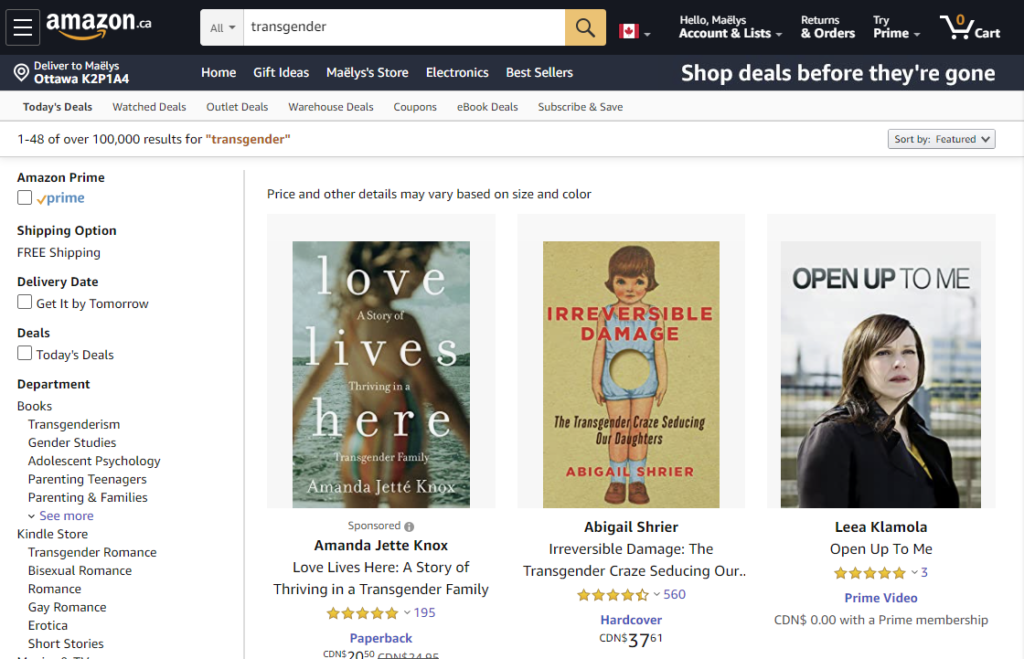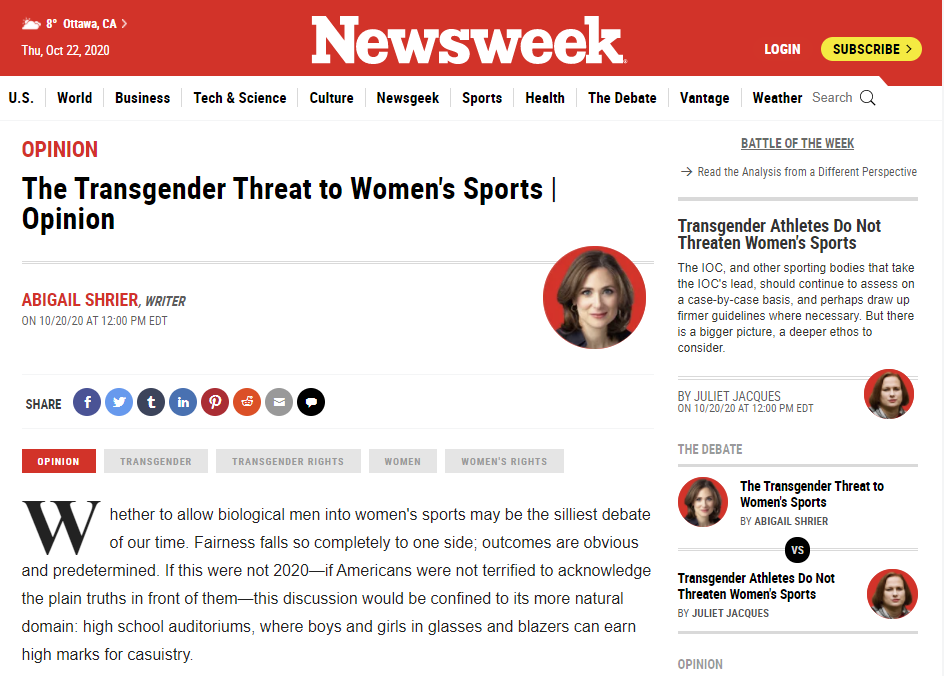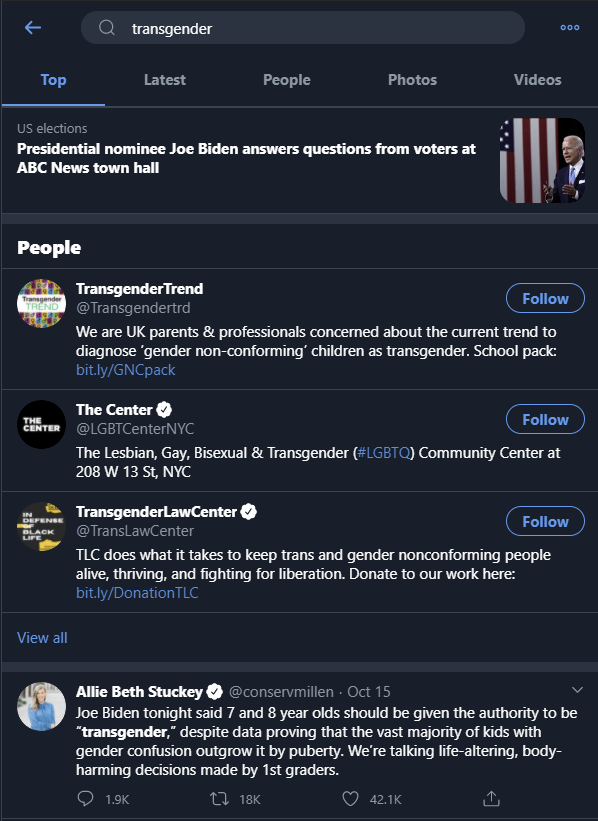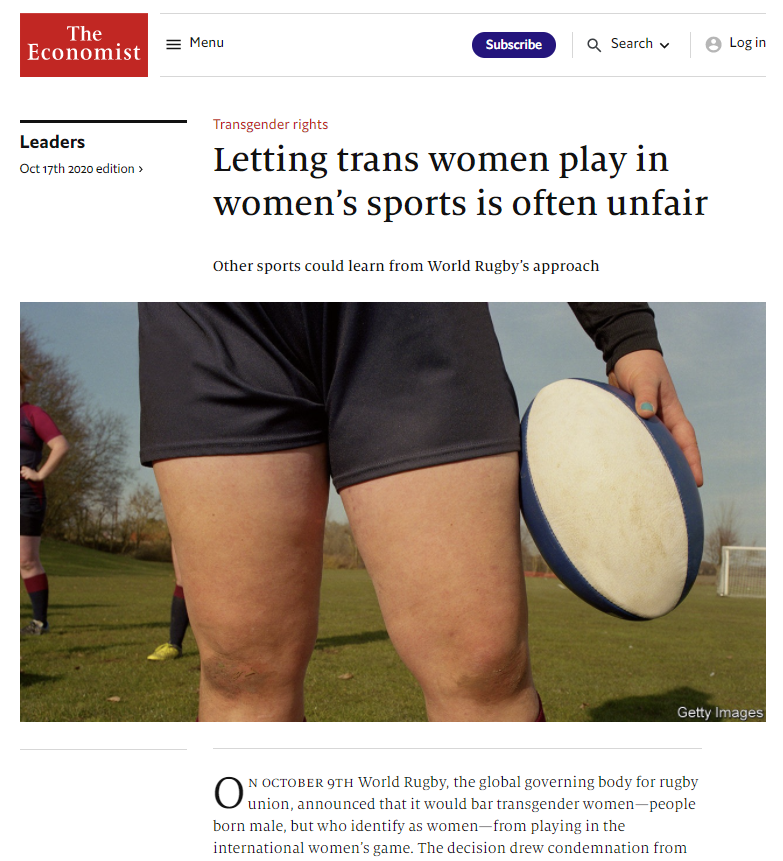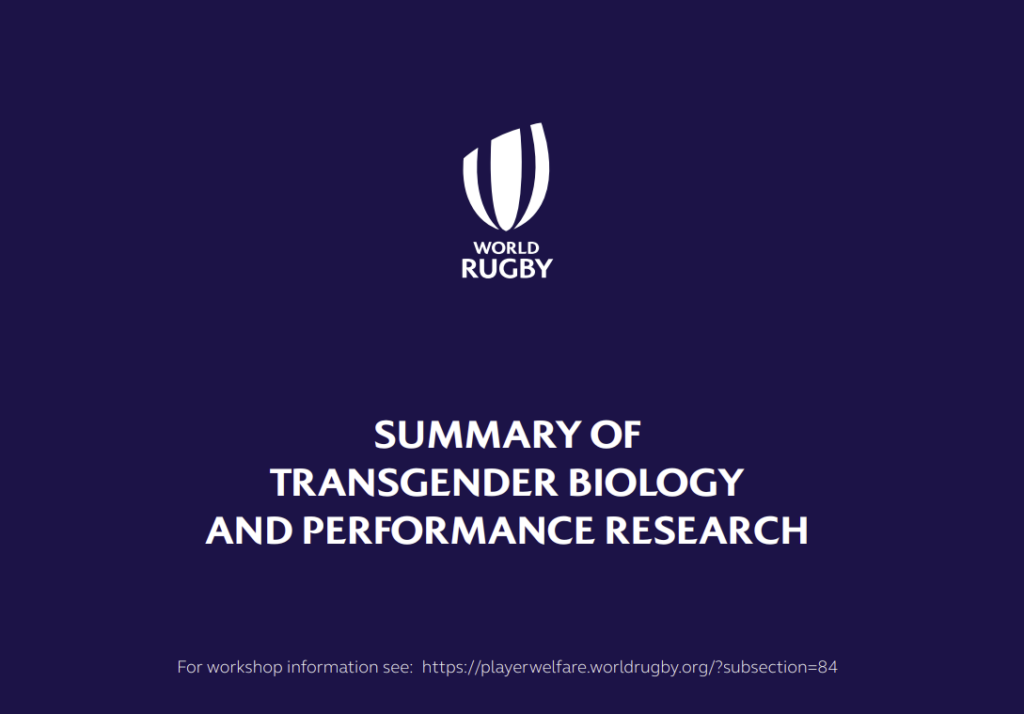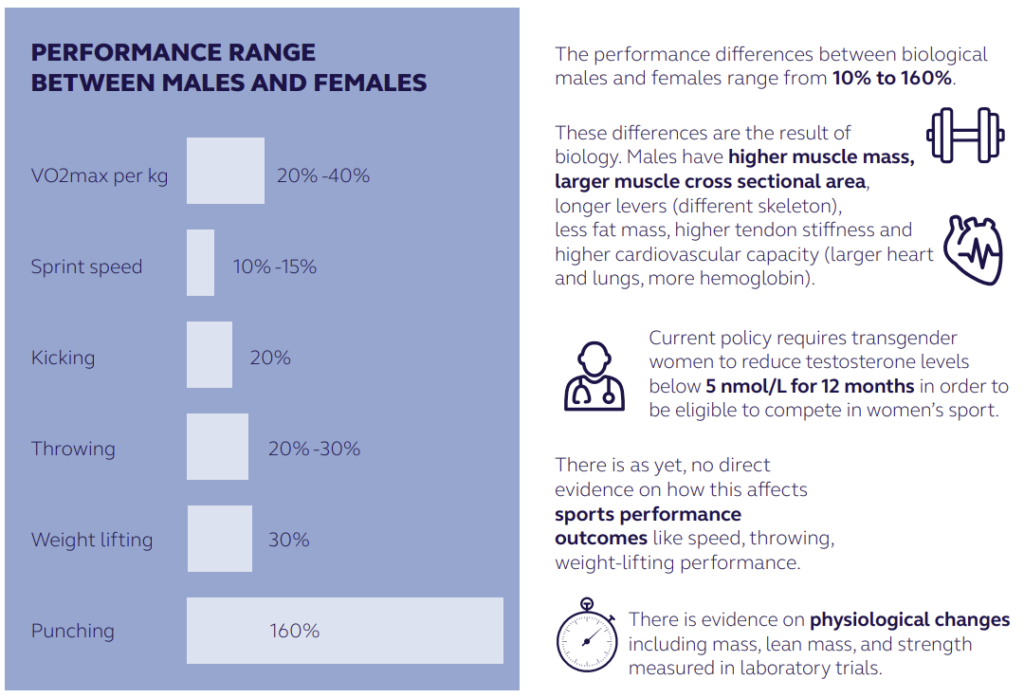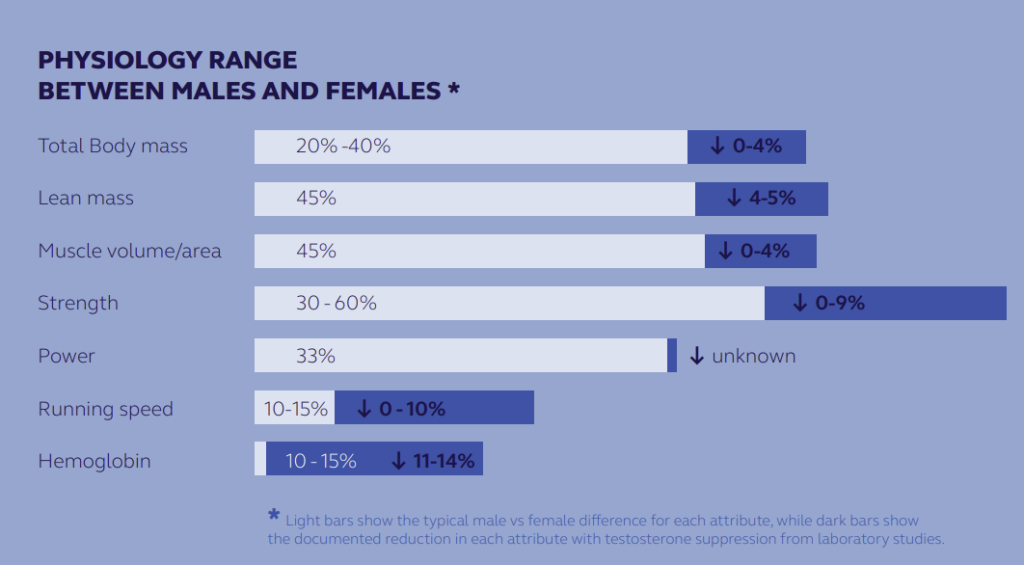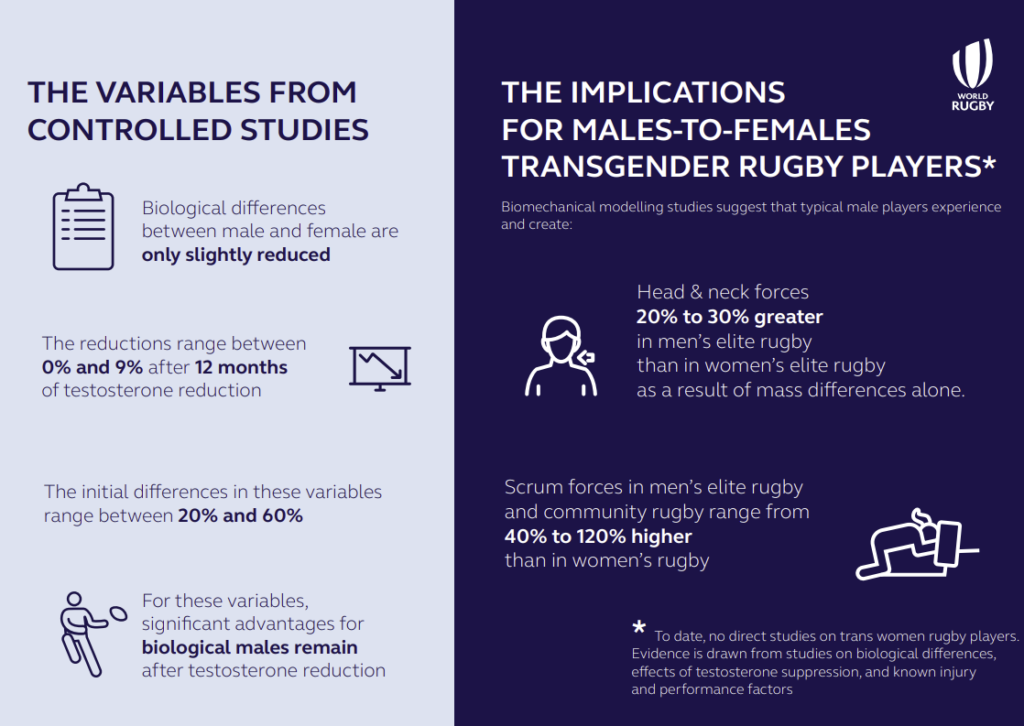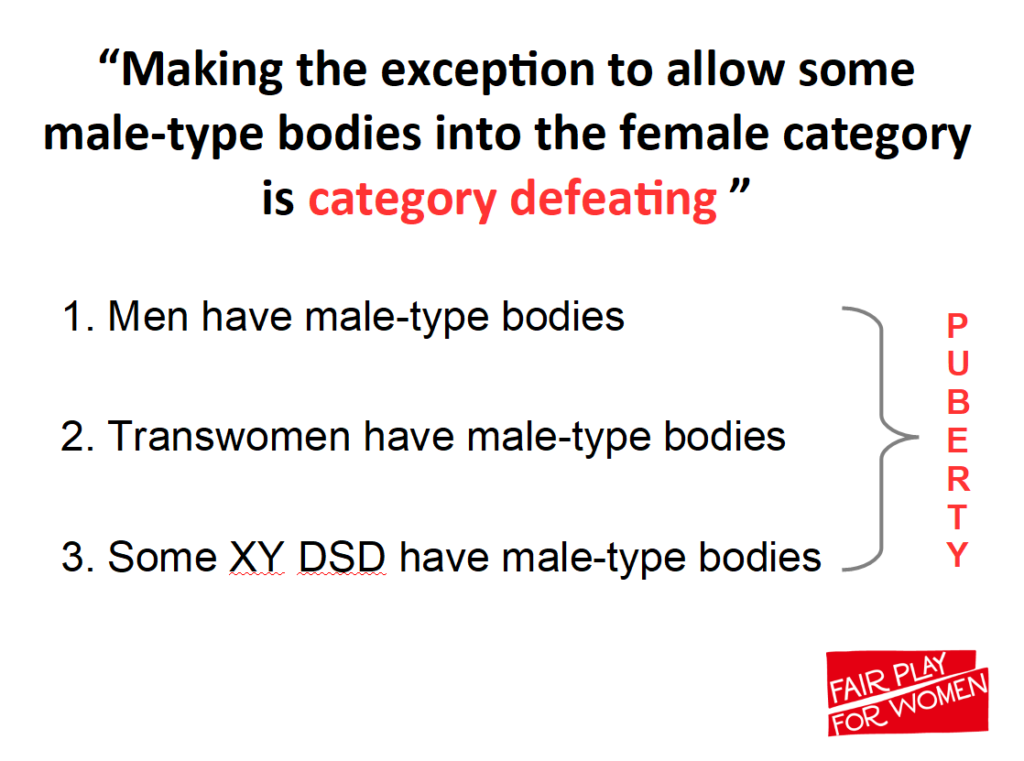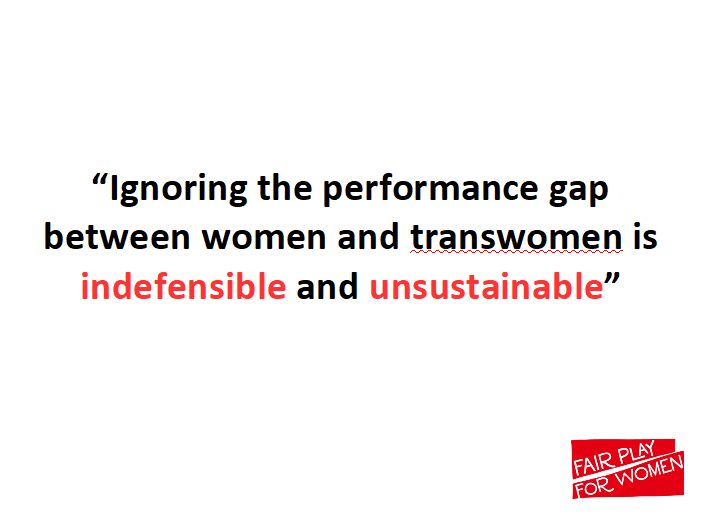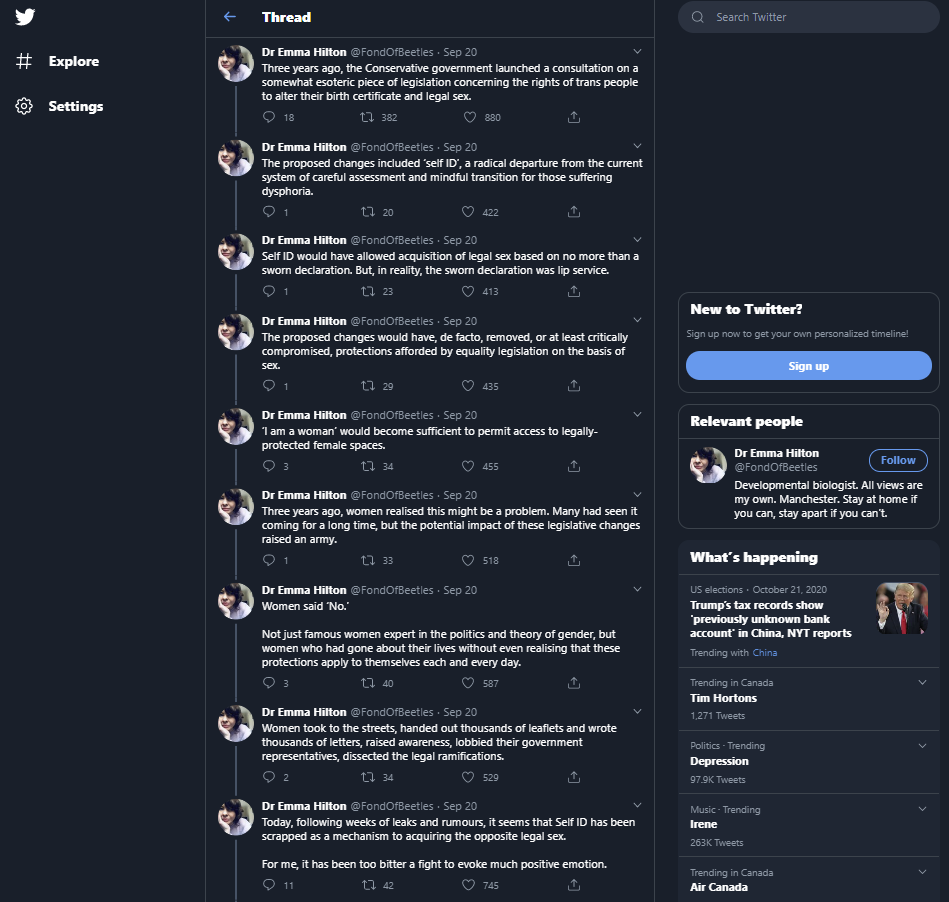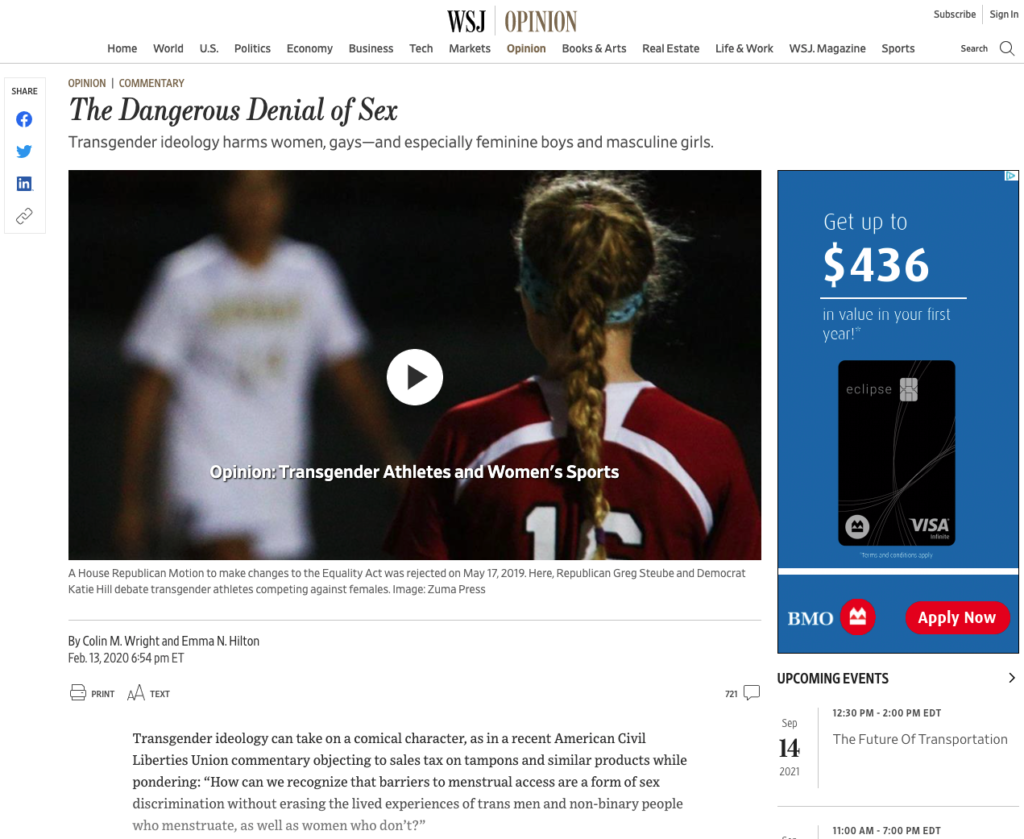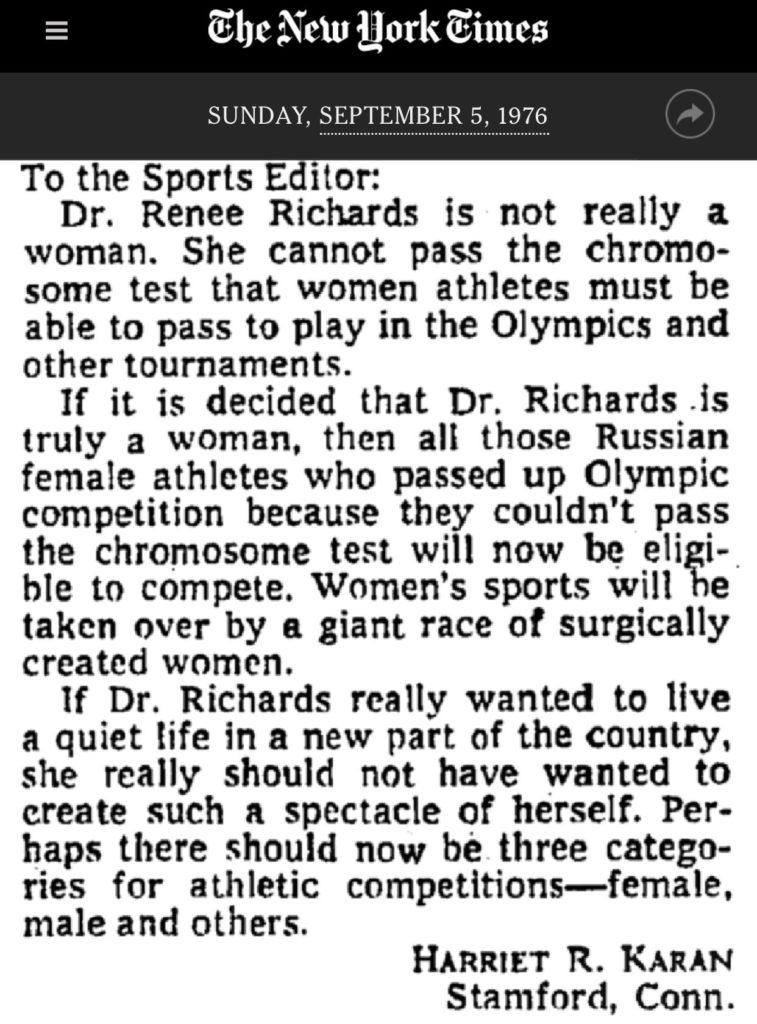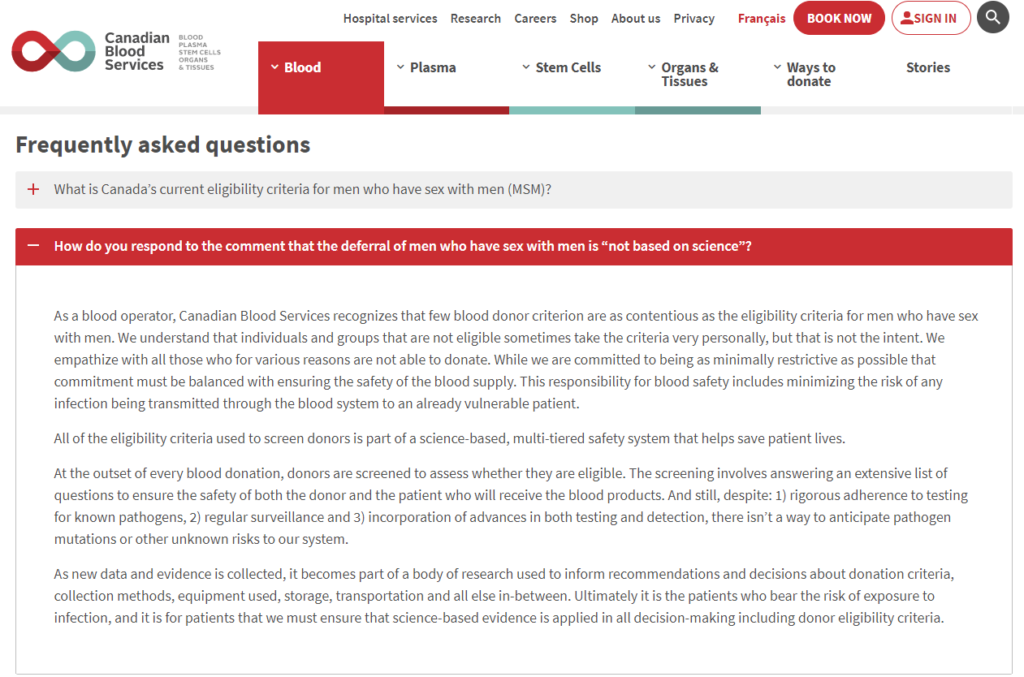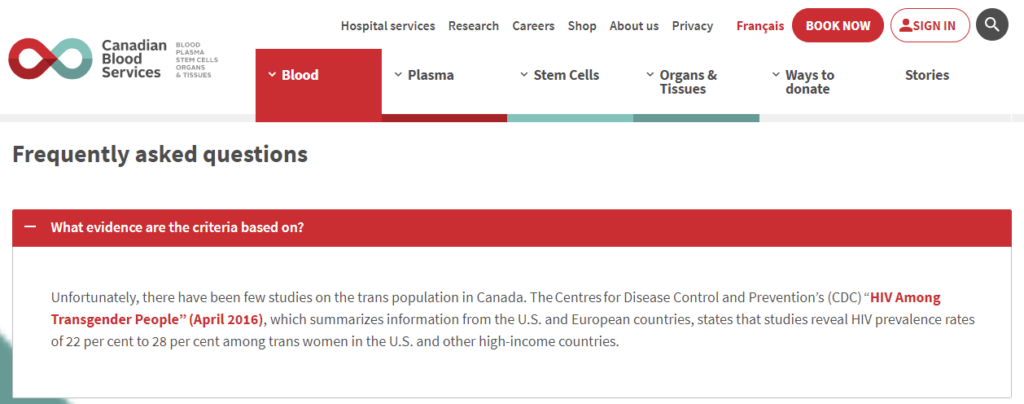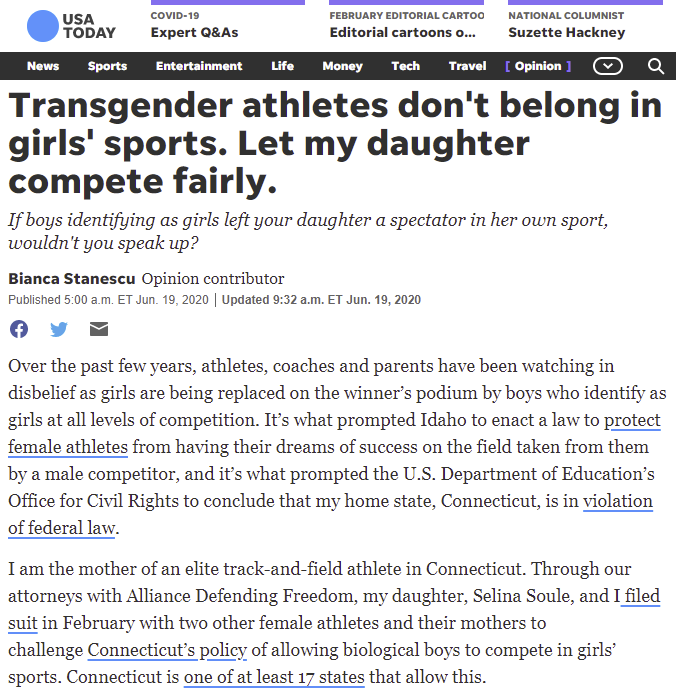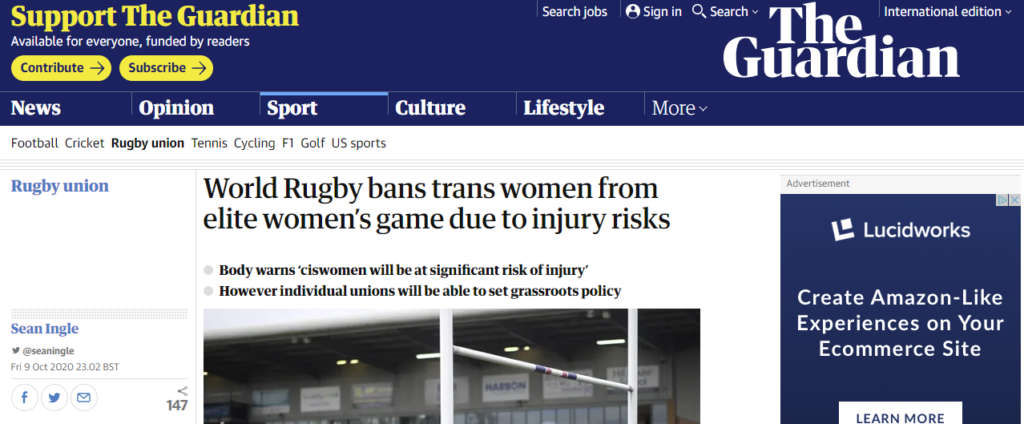Preface
I debated whether to write this article at all.
For the last ten years I’ve been countering the excuses that have been made to exclude gender and sexual minorities from participation in society. From the ban on Gay/Straight Alliances in Catholic schools (excuse: contravenes Catholic teachings and values), to the successful efforts to kill anti-discrimination legislation for trans and non-binary people (excuse: would enable sexual predators), to the removal of LGBTQ-inclusive sex-ed (excuse: parents weren’t sufficiently consulted), to the intimidation at Pride events by white Christian nationalists (excuse: white Christians are under attack). It’s always the same: people who aren’t excluded on the basis of their gender identity or sexual orientation arguing that others should be.
I feel conflicted, because when I document these excuses, my content is reduced to the world view of the most ignorant. Instead of advancing the dialog from a knowledgeable position where we can get into nuances, I am relegated to going over why the latest excuse to exclude us is wrong. To always be back at square one feels awful and I tire of it. That this rejection is wrong should be self-evident and yet it’s not.
Just look at this week:
- The top result for “transgender” on Amazon is a book called “Irreversible Damage: The Transgender Craze Seducing our Daughters” based off of the discredited “rapid onset gender dysphoria” paper. Newsweek published an article from that author this week called “The Transgender Threat to Women’s Sports“.
- World Rugby banned all trans women from playing. The Economist published an article in support called “Letting trans women play in women’s sports is often unfair“.
- The top account on Twitter for “transgender” invokes of the “the gays are recruiting the children” trope; same with the top post.
- The Toronto Star published a comic with the “trans women are a trap” trope.
This transphobia has a demonstrable adverse effect on people’s lives. For that reason, and because I haven’t heard the view I’m about to express elsewhere yet, I decided to go through with the article. Maybe it’ll prove useful to someone who is in a position to influence change.
The blood ban
This week World Rugby announced that they would ban trans women from participating in the sport, citing research on injury risks to [presumably cis] women. Trans men would not be subject to this ban. They concluded their announcement by declaring “rugby is a welcoming and inclusive sport“.
I’m going to get back to the cited science. For now, a history lesson is in order. Let’s look at the ban on gay men and trans women donating blood, because despite sounding a world apart from rugby, the two bans share much in common.
In the mid-1980’s, the Canadian Red Cross Blood Transfusion Service introduced a donor eligibility criterion that banned donations from any man that had had sex with a man even once since 1977. Trans women who had sex with men were implicitly included. So gay men who consistently used safer sex practices were banned – but straight people who used no protection were deemed an acceptable risk. In 1992, blood products became regulated by Health Canada and they grandfathered the donation criterion into regulations.
The context of this time period is important. This was during the AIDS epidemic of the eighties and early nineties that was initially termed a “gay cancer” and it was before the first effective treatment of HIV with antiretroviral therapy in the mid-nineties.
It was also at a time where fear of gay people was the norm. The Canadian government was using the RCMP to hunt and expunge gay people from the public service. The military had order an which “required members of the military suspected of being homosexual to be investigated and then subsequently released“. The police refused to investigate murders of gay people while harassing gay establishments with raids. This was before anti-discrimination protections were introduced nation-wide, before same-sex adoption was legalized, before same-sex couples could marry. The U.S. administration meanwhile regarded the AIDS epidemic not as a medical issue, but a legal one, as sex between gay men was regarded as illegal. The Canadian government’s response was hardly more progressive.
While Health Canada would reduce the deferral period to five years in 2013, one year in 2016, and three months in 2019, it would never remove it, still effectively banning gay men (60% of men have sex at least once a month). They would also be explicit about their rejection of trans women with a new national criteria added in 2016, stating that trans women who did not have surgery to modify the appearance of their genitals would be categorized as men.
To this day the Canadian Blood Services officially maintains that “science-based evidence is applied in all decision-making including donor eligibility criteria“.
“Science-based”. Keep that in mind for later on.
The rugby ban
Like the blood ban and the homophobic society it was introduced in, the social context for the rugby ban is equally pertinent.
We’re in a society that fears and attacks trans people. In 2015, politicians in Canada tried to help ban trans women from using washrooms, change rooms, and crisis facilities. In 2019, the US government started hunting and purging trans people from its military. In 2020, at least 50 anti-trans bills were introduced in the US to ban trans women from participating in sports, ban trans youth from being given gender-affirming medical care, etc. In Ontario, 54% of trans people have been assaulted or verbally harassed for being trans (20% physical assault, 34% verbal abuse without assault). Transphobia is everywhere in Britain too. Anti-trans measures like those of World Rugby are not happening independent of this context, it’s a reflection of it.
Both the blood and rugby bans are based off of caricatures common to their time of introduction. Gay men and trans women are banned from donating blood because they are perceived to be promiscuous and disgusting. Trans women are banned from participating in sports because they are perceived to be burly men in disguise and repulsive. Ergo, that Toronto Star comic from this week.
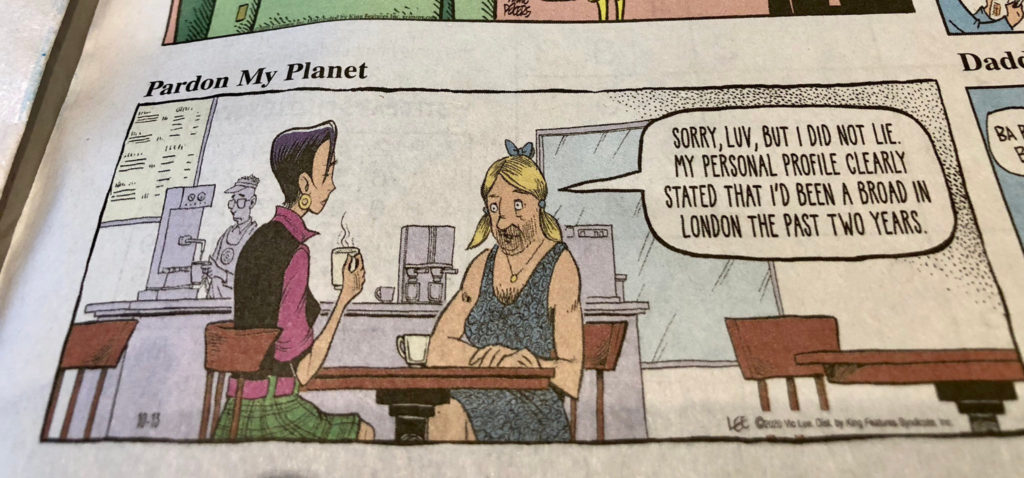
The science
Both bans cited science. So let’s look at that.
World Rugby conducted “Transgender Biology and Performance Research”, the summary of which is found here and is excerpted below. This was the basis for their ban. Their transgender biology and performance research didn’t actually study trans biology or performance. They compared performance differences between cisgender men to cisgender women. From this they assumed, without evidence, that trans women would have an innate advantage. The only data specific to trans people in the research is from a single study looking at performance reduction from androgen suppression for which the one of the authors explicitly told World Rugby that no conclusion could be drawn as to trans women’s performance in rugby. So World Rugby used those findings to assert that trans women had an inherent performance advantage in rugby. The researchers meanwhile didn’t even mention trans men in their trans biology and performance research summary.
This isn’t science. These are hypotheses with no data to validate them. Unsurprisingly, this research was never published in a peer reviewed journal.
World Rugby justified the ban on the grounds of performance but it also justified it on safety merits. Yet the only mention of safety in their research is a remark that forces on the body for men’s elite rugby are greater than women’s on account of “mass differences alone” and from this they assume trans women would be a safety threat. Yet being trans doesn’t dictate weight, no more than being cis does. Meanwhile, mass differences for cisgender women is disregarded as a safety concern.
There’s a double standard for trans women. If they actually cared about mass, then they would apply restrictions equally on cis women. If they cared about musculature, they would apply the same restrictions on cis women. If they cared about height, they would apply to the same restrictions on cis women. And because cis women can be tall and strong, if they were okay with banning all trans women on account that some could be tall and strong, then an equal application of the criterion would suggest that they should be okay with banning all cis women on account that some could be tall and strong. This is of course preposterous.
What’s really going on here is that World Rugby is not immune to the anti-trans sentiment that currently plagues much of the world. They do not consider women who are trans to be women at all, but mentally ill men. This is clear by the language used by World Rugby and the comfort of banning all trans women without actual evidence.
Let’s look at that language. In their statement, World Rugby states “…safety and fairness cannot presently be assured for women competing against transwomen in contact rugby.” Notice the use of “women” here excludes transgender women, and that “transwomen” is meant to denote something apart from women. That subtle omission of the space in “trans women”, the invocation of the term “biological male” in their research, and exclusion from “women” is not unintentional. It’s phrasing used by anti-trans advocates.
Barbara Kay exemplified the use of this terminology in her National Post article originally titled Transwomen deserve respect. But they aren’t ‘women’:
Transactivists reserve particular animus for the thought crime they perceive in the factual statement that “a transwoman is a biological male who identifies as a woman,” rather than the official transactivist mantra that a transwoman “is” a woman.
Such an absurdity — a woman literally redefined as a man or a woman — could be sloughed off as an over-reach if politicians, the justice system and school boards were not similarly complicit in enforcing compliance with this lie. Lies have real-life consequences. If they were identified as transwomen rather than “women,” it would be a very different conversation. Those who were born female would not be fighting tooth and nail to keep “transwomen” out of intimate spaces such as locker rooms, shelters and prisons.
The adoption of this specific vernacular can possibly be traced to the anti-trans hate group that World Rugby invited to speak at their workshop on trans participation. The group they invited called “Fair Play for Women” advocates to force incarcerated trans women into men’s prisons, drive out all trans women from women’s sports, block reforms that would help trans people update identity documents, and block participation in the girl guides for trans youth. Note the same distinction between “transwomen” and “women” in their slides of their presentation to World Rugby:
As with World Rugby, their presentation about performance gap actually didn’t include any data about trans women. It was all conjecture. World Rugby also invited Dr. Emma Hilton to speak, who regularly advocates against the acceptance of trans people on Twitter. She has spoken at a Fair Play for Women event, and there’s a page dedicated to her on the Fair Play for Women website. She co-authored a Wall Street Journal article that stated “transgender ideology harms women, gays.” She was also one of the co-authors of the lone trans-related study cited by World Rugby.
Though World Rugby invited transphobes to present on the participation of trans people in rugby, they did not invite a single rugby player who is a trans woman to present. But they did survey players. Turns out that those who were most likely to have played with trans women were the least likely to support their ejection from the sport.
In their announcement of the ban, World Rugby recommended that the trans women they kicked out instead service cisgender players by volunteering to be an administrator, or coaching, or refereeing. Alternatively, World Rugby suggested, they could play something else. The response reminded me of this letter, from 1976, in the New York Times:
For an interesting local tie, World Rugby had Dr. Araba Chintoh from Toronto’s Centre for Addiction and Mental Health (CAMH) chair the process to come up with these guidelines and speak in favour of the ban. Trans people in Ontario will of course remember CAMH for running a conversion therapy clinic up until 2015 and for forcing trans people to fit in outdated gender norms with “Gender Role Experience” to receive basic gender affirming medical care.
It was never about evidence
Much like the ban of trans women from rugby, the blood donation ban is stated to be evidence-based.
The Canadian Blood Services only cites a single source to justify banning all trans women from donating blood: the old website for the Centers for Disease Control in the United-States which claimed that “HIV prevalence rates of 22 per cent to 28 per cent among trans women in the U.S. and other high-income countries.” I could not locate the source of the 22% figure. The 28% figure was from a meta-analysis that was criticized for having a sampling bias that “has a potentially large role in shaping these results”. Self-reported HIV rates by trans women are actually 2.2 – 3.8% in North America.
In 2019, the CDC reduced their figures of prevalence to 14% and removed references to the original studies, further confirming that the original data was inappropriate for policy making. The Canadian Blood Services still advertises the old discredited figures as their justification. Had the Canadian Blood Services or CDC bothered to collect data from trans women, they would have known what trans people already knew: the numbers were and still are patently absurd.
More to the point, every single blood donation is already tested by the Canadian Blood Services for HIV. They have to because while trans women are banned outright, straight and cis people aren’t, and a third of all HIV cases comes from heterosexual sex and a cis women represent a quarter of all new HIV infections. There’s a double standard, where these same policy makers would never ban women for being cis or people straight despite the data.
It’s also documented that HIV prevalence doesn’t increase when these indiscriminate bans on entire minorities are removed. As All Blood is Equal noted:
Italy lifted its ban in 2001, instead shifting to a person-by-person risk assessment, and has seen no significant increase in HIV prevalence among blood donors. Other OECD countries which have shifted towards similar policies include Latvia, Mexico, Poland, Spain and Chile.
This isn’t about evidence. It’s about fear.
What’s going on is that the homophobia of the 80’s that led to the blanket ban on gay men from ever donating blood was kept alive by straight people who found it easier to do nothing. Every other criteria that can deny blood donation is based off of activity, and that gay men are wrapped in there is based off of the antiquated notion that being gay is also an activity. The activity of perverted straight people. Trans women were wrapped into the same ban because they are conceptualized as perverted men, engaging in the activity of pretending to be women.
The science was never important except as a placeholder so that the Canadian Blood Services would have an excuse not to sound bigoted. Same with World Rugby. The quality of the research never mattered.
Science is not neutral
The assertion that these bans are rooted in science is misleading. Science is about making a hypothesis and then collecting data to see if the assertion is correct. These researchers never collected data about trans women to validate their assertions nor did they ever apply the same criteria to cis people.
The methodology for this research and the way it was applied is so weak that it could be used to justify banning all people with brown eyes from rugby and blood donations. This however didn’t stop news organizations and social media accounts from repeating the claims of evidence about the threat of trans women, because it’s science and therefore right.
We like to think of science as a neutral arbiter of truth but it is not. Data is neutral. What data is collected, who its collected from, what gets omitted, and how all of this is translated into conclusions is subject to the unconscious bias of the authors. It’s the same with journalism: what stories are told, which ones are ignored, what questions are asked, are deeply influenced by the personal views of the people involved.
Scientists and reporters are no more immune to the current messaging that gay men and trans women are predators than any other person. They’ll reflect their fears in their work, much as they’ll reflect it in popular opinions. We live in a world where a quarter of Canadian men aren’t comfortable with a transgender woman moving next door. Those are the people deciding what science gets done and how that science is reported.
That’s beside the point
In my preface, I talked about how I disliked speaking from the frame of reference of the transphobes. I did that in this article by focusing on the science, which is the basis that these organizations claimed justified their bans. The science was bunk, but that’s beside the point, because these bans were never the product of science. They were the product of the attitudes of their time.
The ban on gay men donating blood and trans women from sports was part of a larger effort to eliminate these sub groups from all quarters of public life; to deny them housing, jobs, child custody, adoption, public celebrations, education, public displays of affection, marriage, medical care, access to washrooms, representation in media, use of businesses; anything that made cishets aware of the presence of these minorities. The people who backed this exclusion needed to convince themselves that they weren’t being discriminatory, so they came up with excuses. “Get the gays out” became “it’s about national security”, “it’s about protecting children”, “it’s about religious freedom”. The science angle was just another bad faith effort among many.
The straight and cis people behind these bans will continue to come up with imagined threats to justify excluding gender and sexual minorities. It’s up to the rest of us, particularly straight and cis people, to stop enabling them. Being silent and standing out of their way as they wage this one-sided assault isn’t an act of neutrality; it’s an act of cowardice that empowers those who treat us as inferior aberrations rather than a legitimate manifestation of diversity.

